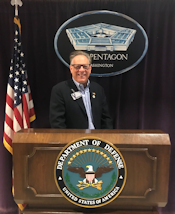American Manufacturers and Industrial Water Users Reduce Water Consumption
Posted on July 29th, 2013 | No Comments »
In my last column I discussed the extraordinary technology advancements in the water industry during the past 25 years. Today, I would like to discuss how these breakthrough technologies have enabled American manufacturers and industrial water users to reduce their water usage. There are hundreds of examples of companies such as: Ford, Intel, BASF, Walmart and MillerCoors. Each of these companies has a defined plan to reduce water usage.
Look what Ford has accomplished in reducing its water consumption during the last decade.

Let’s look at another American icon, MillerCoors, in how it is dealing with reducing water consumption.
In 2008, MillerCoors, empowered its employees to develop and employ measures to reduce the 4.1 barrels (129 gallons) of water it was using to produce one barrel of beer. Today, thanks largely to innovative methods to reduce cleaning and flushing of its systems, MillerCoors now uses 3.6 barrels (113 gallons) of water, on average. The going rate for water in Chicago is $2.89 per 1,000 gallons, which means the 0.5 barrel or 15.75 gallons difference would amount to savings of about 0.20 cents per barrel, which doesn’t sound like a lot, but over millions of barrels it really adds up. “That’s a testament to our employees, a significant improvement of our operations, and a new benchmark for the industry,” said MillerCoors Director of Sustainability, Kim Marotta. “Our goal is to reduce water consumption by 15% from 2008 to 2015.”
One of the brewery’s approaches involves implementing short interval control (SIC). SIC is a best-practice methodology developed to analyze performance on an ongoing basis and support long-term improvements. Marotta explained, “When we put SIC into place, employees became much more engaged. As a result of this and other initiatives, we’ve been saving tens of millions of gallons of water annually in our plants.”
Another approach with even more significant results is reducing water needed for barley agri-production. That irrigation accounts for about 90% of the overall water consumption attributed to an average bottle of beer. To accomplish that reduction, the brewery worked with The Nature Conservancy in Idaho’s Silver Creek Valley. “We worked with one farm in particular and have saved over 270 million gallons of water to date – approximately what one brewery would use in two months,” Marotta said. One procedure that MillerCoors implemented was that it changed irrigation sprinkler heads, which were designed so barley farmers could lower them physically to reduce evaporation.
In an Earth Day ceremony this year at National Geographic headquarters in Washington, DC, the U.S. Water Alliance presented one of its three U.S. Water Prizes to MillerCoors for its work with The Nature Conservancy and the Idaho Silver Creek barley farmers.
“More barley crop per water drop is the way I like to characterize how MillerCoors is leading the way with footprinting stewardship and education,” said U.S. Water Alliance President, Ben Grumbles. “MillerCoors deserves the 2013 U.S. Water Prize for more than the efficiency changes in their facilities. It’s the innovative reach beyond and up the agriculture supply chain that caught our attention. In all, they’ve managed a 20% reduction in agricultural water use.”
Congratulations to MillerCoors on its achievements.
Kudos to these great corporate citizens for reducing their water consumption.







